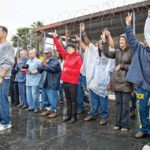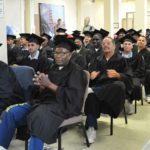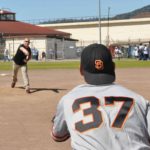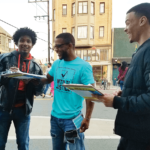By Juan Haines and Miguel Quezada San Quentin News Staff More than 400 inmates and about two dozen Bay Area volunteers mingled on San Quentin’s Lower … [Read more...]
Archives for June 2016
80 Committed Men Graduates From GRIP
By Marcus Henderson Staff Writer The 2016 Guiding Rage into Power ‘GRIP’ program graduated 80 dedicated men. The year program guided prisoners on a … [Read more...]
Opening Day on the Diamond
Warden Ron Davis showed he had some power in his arm throwing out the opening pitch in the season opener. The San Quentin All-Stars baseball team beat … [Read more...]
CDCR’s New Press Secretary Visits SQ
Vicky Waters, the new California Department of Corrections and Rehabilitation (CDCR) press secretary, toured San Quentin. Lt. S. Robinson, Public … [Read more...]
Photographer Nigel Poor Conveys the Stories of SQ Inmates
Ten years ago the post office delivered a letter from San Quentin State Prison to the wrong address. Professor of Photography Nigel Poor received the … [Read more...]
A Movement to Restore Voting Rights to Ex-felons
A movement is under way to restore voting rights to more ex-felons, The Juvenile Justice Information Exchange reports. “The biggest obstacle in most … [Read more...]
Voting Rights a Major Issue For Upcoming Election
By Isaiah Thompson-Bonilla Journalism Guild Writer Voting rights in 2016 will once again become a major issue among eligible voters in 16 states as … [Read more...]
Voter Initiatives Monetize the Petition Process
This presidential year has inspired many potential voter initiatives and further monetizes the petition process. In theory, a petition to place an … [Read more...]
Treatment Costs of Hep C for Inmates on the Rise
By David Eugene Archer Sr. Journalism Guild Writer Only a few states and the federal government have increased spending on a new generation of drugs … [Read more...]
Soledad’s Medical Operations Return Back to CDCR
Medical operations at the Correctional Training Facility in Soledad were turned over again to the California Department of Corrections and … [Read more...]
- 1
- 2
- 3
- …
- 5
- Next Page »





